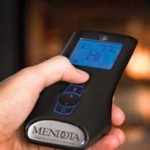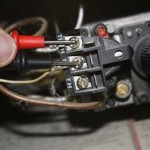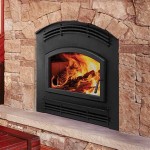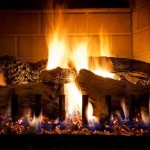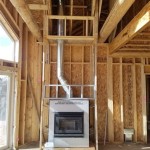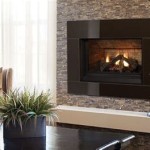Outdoor Fireplaces: Extending Living Spaces and Enhancing Ambiance
Outdoor fireplaces represent a significant trend in modern landscaping and home design. They provide not only a source of heat and light during cooler months but also function as a focal point for outdoor gatherings, extending the usability of patios and decks into the shoulder seasons. Understanding the different types, considerations for installation, and maintenance requirements is crucial for homeowners considering adding this feature to their property.
The allure of an outdoor fireplace lies in its ability to create a sense of warmth and intimacy. The crackling fire, the dancing flames, and the radiant heat contribute to a relaxed and inviting atmosphere, encouraging conversation and fostering a connection with nature. Beyond practical heating, an outdoor fireplace enhances the aesthetic appeal of a property, adding value and visual interest to outdoor living spaces.
From a design perspective, outdoor fireplaces can be integrated into a variety of architectural styles, ranging from rustic and traditional to contemporary and minimalist. The choice of materials, size, and placement will significantly influence the overall impact and functionality of the fireplace. Therefore, careful planning and consideration are essential to ensure a successful installation that complements the existing landscape and meets the homeowner's specific needs.
Types of Outdoor Fireplaces: A Comparative Overview
Outdoor fireplaces are available in a diverse range of designs and fuel types, each offering unique advantages and disadvantages. The primary categories include wood-burning, gas-burning, and electric fireplaces. Understanding the characteristics of each type is essential for selecting the option that best suits individual preferences, budget, and local regulations.
Wood-Burning Fireplaces: These are the most traditional type, appealing to those who appreciate the authenticity and sensory experience of a real wood fire. They offer a robust heat output and a distinctive aroma. However, wood-burning fireplaces require a chimney for proper ventilation and are subject to local regulations regarding air quality and burning restrictions. Maintenance involves regular cleaning of the firebox and chimney to prevent creosote buildup, a flammable substance that can pose a fire hazard. The cost of fuel (firewood) can also be a significant factor to consider.
Gas-Burning Fireplaces: Gas fireplaces, fueled by natural gas or propane, offer convenience and ease of use. They can be ignited with the flip of a switch or a remote control and provide consistent heat output. Gas fireplaces are generally cleaner-burning than wood-burning models, producing fewer emissions and requiring less maintenance. They often feature realistic-looking artificial logs that mimic the appearance of a wood fire. Installation requires a connection to a gas line, which may necessitate professional plumbing services. The cost of operation will depend on the price of natural gas or propane in the specific region.
Electric Fireplaces: Electric fireplaces are the simplest to install and operate, requiring only a standard electrical outlet. They produce heat by circulating air over a heating element and typically feature a visual display of flames. Electric fireplaces are a convenient option for adding ambiance and supplemental heat to an outdoor space, but they generally provide less heat output than wood-burning or gas-burning models. They are also the most environmentally friendly option, as they do not produce any emissions. However, their visual authenticity may not appeal to those seeking the ambiance of a real fire. Electric fireplaces are often more portable and can be easily moved from one location to another as needed.
In addition to these primary categories, prefabricated outdoor fireplaces are available in a variety of styles and materials. These units are typically made from concrete, stone, or metal and can be installed relatively quickly. Custom-built outdoor fireplaces offer the greatest design flexibility, allowing homeowners to create a unique and personalized outdoor feature. However, custom-built fireplaces are generally more expensive and require more time for planning and construction.
Key Considerations for Installation and Design
The installation of an outdoor fireplace involves careful planning and consideration of various factors, including location, ventilation, materials, and safety. Adhering to local building codes and regulations is crucial to ensure a safe and compliant installation. It is also advisable to consult with a qualified contractor or designer to ensure that the fireplace is properly integrated into the existing landscape and meets the homeowner's specific needs.
Location: The location of the outdoor fireplace should be carefully considered to maximize its functionality and aesthetic appeal. It should be situated in a location that is easily accessible from the house and provides ample space for seating and circulation. The fireplace should also be positioned away from flammable materials, such as trees, shrubs, and fences. Consideration should be given to prevailing winds to minimize the risk of smoke or embers blowing into the house or neighboring properties. Proper drainage is also essential to prevent water damage to the fireplace and surrounding area.
Ventilation: Proper ventilation is crucial for all types of outdoor fireplaces, especially wood-burning models. A chimney or flue is necessary to safely exhaust smoke and combustion gases. The chimney should be properly sized and constructed to ensure adequate draft and prevent backdrafting. Regular cleaning of the chimney is essential to remove creosote buildup and prevent chimney fires. Gas fireplaces also require proper ventilation to prevent the accumulation of carbon monoxide, a colorless and odorless gas that can be deadly. Consult local building codes for specific ventilation requirements.
Materials: The materials used to construct an outdoor fireplace should be durable, weather-resistant, and aesthetically pleasing. Common materials include brick, stone, concrete, and metal. The choice of materials will depend on the desired style and budget. Brick and stone offer a classic and timeless look, while concrete can be molded into a variety of shapes and designs. Metal is a durable and low-maintenance option that is often used for prefabricated fireplaces. The materials should be selected to complement the existing architecture and landscaping.
Safety: Safety is paramount when installing and using an outdoor fireplace. A fire-resistant surface should be placed around the fireplace to prevent sparks or embers from igniting nearby vegetation. A spark screen or fire screen should be used to contain sparks and prevent them from escaping the firebox. Children and pets should be supervised at all times when the fireplace is in use. A fire extinguisher or water hose should be readily available in case of emergency. Never leave a fire unattended, and always extinguish the fire completely before leaving the area.
Furthermore, consider the aesthetic integration of the fireplace with the surrounding landscape. Will the fireplace serve as a standalone feature or be incorporated into a larger outdoor living area? The size and scale of the fireplace should be proportionate to the size of the space. Consider incorporating built-in seating, storage for firewood, or a counter for food preparation to enhance the functionality of the outdoor area.
Maintaining and Caring for your Outdoor Fireplace
Proper maintenance is essential to ensure the longevity and safe operation of an outdoor fireplace. Regular cleaning and inspection will help to prevent problems and extend the lifespan of the fireplace. The specific maintenance requirements will vary depending on the type of fireplace and the materials used in its construction.
Wood-Burning Fireplaces: Wood-burning fireplaces require the most maintenance. The firebox should be cleaned regularly to remove ashes and debris. The chimney should be inspected annually by a qualified professional to check for creosote buildup and other potential problems. Creosote is a flammable substance that can accumulate in the chimney over time and pose a fire hazard. The chimney should be cleaned as needed to remove creosote and prevent chimney fires. The exterior of the fireplace should be cleaned regularly to remove dirt and grime. Any cracks or damage to the brick or stone should be repaired promptly to prevent further deterioration.
Gas-Burning Fireplaces: Gas fireplaces require less maintenance than wood-burning models. The burner should be cleaned periodically to remove any debris that may be blocking the gas flow. The pilot light should be checked regularly to ensure that it is burning properly. The gas lines should be inspected annually by a qualified professional to check for leaks. The exterior of the fireplace should be cleaned regularly to remove dirt and grime. Any damage to the artificial logs should be repaired or replaced to maintain the aesthetic appeal of the fireplace.
Electric Fireplaces: Electric fireplaces require minimal maintenance. The heating element should be checked periodically to ensure that it is functioning properly. The visual display of flames should be cleaned regularly to remove dust and fingerprints. The exterior of the fireplace should be cleaned regularly to remove dirt and grime. Any damaged cords or plugs should be replaced promptly to prevent electrical hazards.
In addition to these specific maintenance tasks, it is important to protect the outdoor fireplace from the elements. During the off-season, the fireplace should be covered with a waterproof cover to prevent water damage. This is particularly important in climates with harsh winters. Regular inspection and prompt repair of any damage will help to ensure that the outdoor fireplace remains a safe and enjoyable feature for years to come.
By understanding the various types of outdoor fireplaces, considering the key factors for installation and design, and implementing a regular maintenance schedule, homeowners can create an outdoor living space that is both functional and aesthetically pleasing. The addition of an outdoor fireplace can significantly enhance the value and enjoyment of a property, providing a warm and inviting gathering place for family and friends.

Outdoor Fireplace Kits Stonewood S Cape Cod Ma Nh Ct

Outdoor Fireplaces Round Grove S

30 Outdoor Fireplace Ideas Cozy Fireplaces

25 Outdoor Fireplace Ideas Fireplaces Fire Pits

Outdoor Fireplace Design Ideas Getting Cozy With 10 Designs Unilock

How To Build An Outdoor Fireplace Today S Creative Life

Williams Fireplace Project

How We Built Our Outdoor Fireplace Chris Loves Julia

Outdoor Fireplace Design Ideas Judd Builders Asheville Nc

Outdoor Fireplace Design Secrets From An Expert
Related Posts


